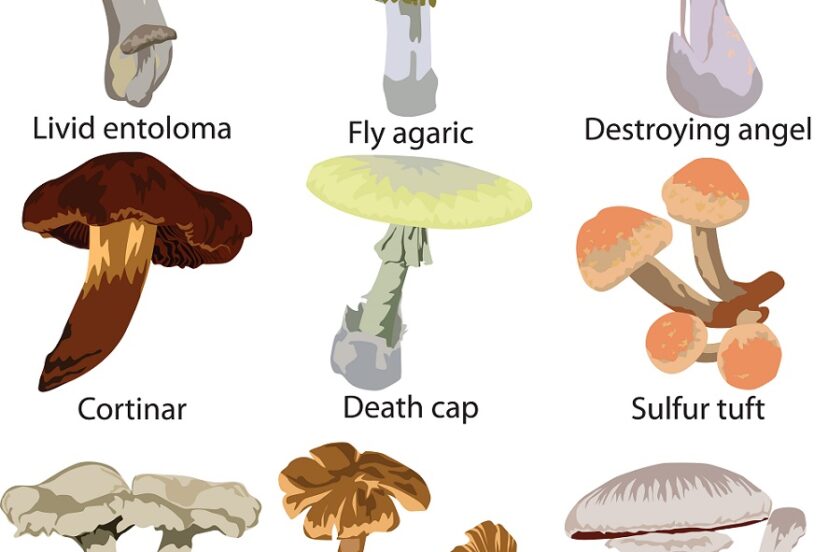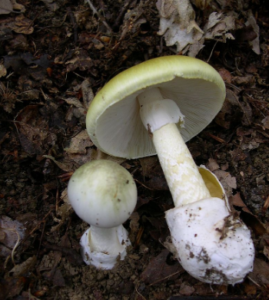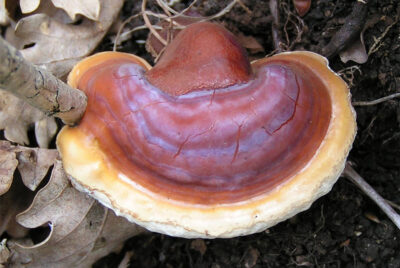When you are eating mushrooms do you think about brain health? I doubt it :) But…
5 Common Poisonous Mushrooms to Avoid

Have you ever heard of anybody getting sick or even die from poisonous mushrooms?
While getting mushrooms can be as simple as making a trip to the store, taking time to forage for wild mushrooms can be an incredibly fun pastime. Before you put your shoes on and head out the door, you should know that while a lot of tasty mushrooms grow in the wild, so do many poisonous ones. These tricky little fungi can even look similar to some of your favorite edible ones. In this article, we will be taking a look at 5 common poisonous mushrooms and how to identify them.
Death Cap
Up first on our list is the death cap mushroom. As the name suggests, this is not something you want to eat. In fact, all it would take is a few bites to seal your fate. What’s worse? The symptoms don’t always show up right away. From the time of ingestion, it could take you over a week to succumb to the effects of the poison. Growing rather inconspicuously, these little mushrooms have round silver caps atop a snow-white stem.
These mushrooms are frequently found growing in urban environments under small trees and bushes. This proximity to people adds to its deadly effects, with an outbreak in Vancouver, British Columbia resulting in the death of a child. While these mushrooms may seem innocent in appearance, they are one to be familiar with and steer clear of.
Destroying Angel
Up next on the list is the destroying angel. These mushrooms are actually related to the death cap, giving you an idea of how poisonous they can be. In fact, these mushrooms are responsible for the majority of mushroom related deaths. This is because treating the poison is challenging, all it takes is a few hours to cause irreversible damage to the vital organs.
To make matters worse, this mushroom is a close look-alike to the puffball mushroom. When trying to distinguish between these two, attention to detail is critical. The destroying angels have white stems and gills that are not attached to the stem. You can also find a broken membrane near the base of the destroying angel’s stem. A keen eye will keep you from collecting the wrong kind of mushroom.
Conocybe Filaris
This poisonous mushroom, sometimes also called Pholiotina rugosa, is a common lawn mushroom to the Pacific Northwest. Characterized by a rusty brown cap, gills, and stem, this mushroom also has an easily noticed movable ring around the stem.
While these little mushrooms may seem relatively harmless, they contain the same toxins as the death cap. This poison is especially tough on the liver, making it a hard one to treat. Instead, it is best to steer clear, especially if you find any mushrooms with a moveable ring around the stem.
Jack O’Lantern
These mushrooms get their name from their typical orange hue. You can differentiate these from Chanterelles by looking for the presence of gills, a characteristic found only in the Jack O’Lanterns. While these mushrooms are fairly rare, it’s still important to be aware of them, especially as they are a look-alike to one of the tastier wild mushrooms. If you are having trouble distinguishing the gills of the Jack O’Lantern from the �gill-like structures’ of the chanterelles, here’s one more tip. If you can look at the mushroom in low light, the Jack O’Lantern’s gills will glow in the dark!
False Morels
For any seasoned mushroom hunter, morels are high on the list of ones to look for. These fungi are full of wonderful flavor and great consistency, making them an ideal mushroom to forage. While they thrive in colder climates near the bases of dead trees, so do a more sinister group of poisonous mushrooms called the false morels.
These look-a-likes don’t always cause a fatal reaction when ingested. It is highly dependent on the quantity of the poison consumed, and the tolerance of the consumer. Common side effects from ingesting false morels include vomiting, diarrhea, and in some cases, death.
Wrapping Things Up
That’s it for this list of 5 common poisonous mushrooms. We hope that you are able to go about your mushroom foraging with a little more confidence and caution after learning about the devastating consequences of picking the wrong ones. And more importantly, if you are ever out and foraging and can’t make a completely confident identification of a mushroom, leave it be.



